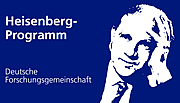Einführung
Gemeinsamer Nenner bzw. Fokus des in drei Teilprojekte unterteilten Forschungsprojekts "Geschichte der Kulturen und Räume in der Neuzeit" sind historische Konzepte, Wahrnehmungen und vor allem auch Nutzungen von Räumen. Räume werden dabei als soziale Objekte verstanden, die durch ihre räumliche Dimension gekennzeichnet sind. Diese Dimension kann materiell, ideell/imaginär oder auch hybrid sein. Um den Zusammenhang von Raum und Gesellschaft, d. h. von Räumen, ihren Gestaltern und Nutzern auch für die historischen Gesellschaften zu analysieren, bedarf es Methoden der Analyse, die nicht einfach von heutigen Konzepten oder Theorien – aus der Geographie, Soziologie oder Philosophie – übertragen werden können.
Eine Einführung in die Historiographie und Methode zur Analyse historischer Räumlichkeiten (Projekt 1) stellt daher ein dringendes Desiderat dar. Die begrifflich-methodische und historiographische Auseinandersetzung mit Räumen (räumlichen Konzepten, Konfigurationen und Praktiken) ist zugleich eine Gelegenheit, für die Geschichtswissenschaften eine Position zu den aktuellen Debatten um den sogenannten spatial turn zu formulieren, auf die politische „Karriere“ dieses Begriffs, v. a. in Deutschland, einzugehen und darüber hinaus, Raumkonzepte und Methoden der Analyse von Räumen/Räumlichkeiten in den Geschichtswissenschaften zu etablieren. Gerade in einer Zeit, in der die globale Ebene immer mehr zu einer eigenen Realität wird, in der aber auch eine breite Öffentlichkeit über sie nachdenkt und sich von ihr betroffen fühlt, scheint es angebracht, in historischer und zugleich in systematischer Weise über die räumliche Seite des Lebens nachdenken.
Die zwei anderen Projekte sind stärker inhaltlich ausgerichtet, d. h. konkret historischer Natur: In Projekt 2 geht es um die Möglichkeiten „globalen“ Handels in der Vormoderne. Hier steht die Hypothese zur Diskussion, dass der vormoderne Fernhandel immer auch auf konkrete Orte oder regionale Netzwerke (also auf das „Lokale“) angewiesen war. Es sollen sowohl die Raumvorstellung und das Raumwissen der Händler untersucht werden als auch die konkreten räumlichen Organisationsformen des Groß- und Fernhandels. Projekt 3 beschäftigt sich anhand von Urbanisierungsprojekten städtischer Peripherien v. a. im 18. und frühen 19. Jahrhundert unter anderem mit der Differenzierung von Zentrum und Peripherie. Nachgegangen wird in diesem Projekt den Prozessen der Raum-Ordnung städtischer Peripherien, ihren Unterschieden zu den späteren, stärker politisch-administrativ kontrollierten Urbanisierungsprojekten, den Visionen der Akteure, den Realisierungen der Projekte und den Gründen ihres gelegentlichen Scheiterns. Die Geschichte der gescheiterten (oder nur mühsam vollendeten) großräumlichen Suburbanisierungsprojekte soll nicht zuletzt Anlass geben, über einige Paradoxien der Stadt- und Raumplanung nachzudenken: Lassen sich Lebensräume überhaupt planen, herstellen und kontrollieren?
Introduction (english)
Historical concepts, perceptions and especially the use of spaces are the common ground on which this research project, which is divided into three subprojects, is based. In this context spaces are viewed as social objects characterized by their spatial dimension. This dimension can be material, ideational/imaginary or hybrid. In order to analyse the interrelationship between space and society, i.e. between spaces and their creators and users in historical societies, it is necessary to utilise analytical methods that cannot be readily applied using modern geographical, sociological or philosophical concepts or theories.
An introduction to the historiography of space and the methods to analyse historical spatialities (Project 1) therefore poses an urgent desideratum. The conceptual methodic and historiographic examination of space (spatial concepts, configurations and practices) is, at the same time, an opportunity for the historical sciences to formulate a position with regards to the current debates over the so-called spatial turn, address the political “career“ of this term, especially in Germany, and furthermore, establish spatial concepts and methods within the historical sciences to analyse space and spatialities. It seems appropriate – particularly at a time in which the global platform is increasingly becoming its own reality, a reality contemplated by a broad community that feels affected by it – to deliberate on the spatial side of life in a historical and concomitantly systematic way.
The two other projects focus more on content and are therefore of a more concrete historical nature: Project 2 deals with the possibilities of “global“ trade in the premodern world. This project discusses the hypothesis that premodern long-distance trade was always dependent on concrete locations or regional networks (therefore on local conditions). The merchant’s spatial perception and spatial knowledge will both be examined as will the concrete spatial organisational forms of wholesale and overseas trade. Project 3 concerns itself with urbanisation projects at the peripheries of cities, especially in the 18th and early 19th centuries, focussing on, among other things, the differentiation between centre and periphery. This project will trace the spatial planning processes of city peripheries, their differences from latter, more heavily politically-administratively controlled urbanisation projects, the visions of the actors, the realisation of the projects and the reasons for their occasional failures. Last but not least, the narrative of failed (or laboriously completed) large-scale suburbanisation projects should provide cause to contemplate some of the paradoxes of city, urban and regional planning: Do living spaces allow themselves to be planned, established and controlled in any way at all?
Beteiligte Personen
Folgende Personen haben die Realisierung der Projekte in unterschiedlichen Phasen unterstützt:
Dr. Leif Scheuermann (Kartographie)
Stefan Kaufmann B.A. (SHK)
Ekkehard Schönherr M.A. (WHK)
Tobias Sowade (SHK)
Tim Thierbach B.A., MEd. (WHK)
Sebastian Zylinski M.A. (WHK)
Workshop 2017
"Spatial History and Its Sources"
Workshop in St. Andrews, 24-25 August 2017
Indian History Congress 2016
77th Session of Indian History Congress
Venue: University of Kerala, Thiruvananthapuram
Date: 28-30 December 2016
more information
EAUH 2016
13th International Conference on Urban History: European Association for Urban History, 2016: “Reinterpreting Cities”, Helsinki/Finland, 24-27 August 2016
Main Session 22: Reinterpreting Space and Spatial Relationships
Deadline for proposals submission: October 31, 2015
CASiM Conference 2016
European Cities in Dynamic Competition - Urban Governance, Cooperation, Competitiveness and Sustainability
Ort: HHL Leipzig
Zeit: 6./7. Juli 2016
Webseite


